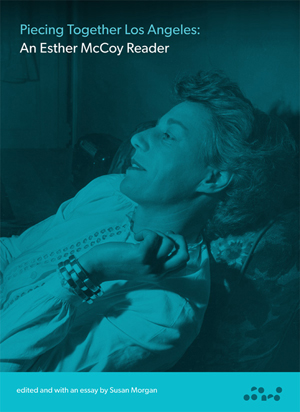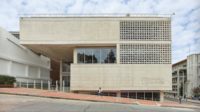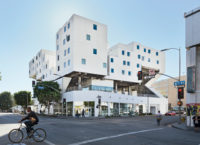Affection isn’t a word often used to describe architecture criticism, but that’s the ruling emotion of Piecing Together Los Angeles, the first collection of the writings of California historian and critic Esther McCoy (1904-89). There’s McCoy’s affection for Los Angeles superstars like Charles Eames, Pierre Koenig and John Lautner when they were young and needed books like McCoy’s Five California Architects (1960) to give their work a backstory—and when they were old, and the world needed a reminder of their talents. (On Lautner: “Instead of repose, his houses are thorny with ideas, ideas that wake up the eye and astonish the mind.” On Ray Eames: “She had one of those minds that feasted on facts. Along with this was a sensibility that could transform facts into art.”) Reyner Banham called McCoy “the founding mother” and said, “She has the gift of friendship...and is profoundly concerned about people... and that is one of the special strengths she brings to her architectural writing.” This book, which collects McCoy’s never-finished memoirs, essays on three generations of California architects, fiction, and retrospective essays from the 1980s, is the product of editor Susan Morgan’s affection for McCoy’s whole project. The culmination may be her contribution to Blueprints for Modern Living, the catalog for the Museum of Contemporary Art’s 1989 Case Study exhibition, published two months before her death.

McCoy had the opportunity to create a school and then witness its foibles, its meanderings, and opine about its legacy. Topics in the collection range from R.M. Schindler (for whom she worked as a draftsperson in the 1940s), through the Case Study House heyday, and on to postmodern diversity, the Vanna Venturi house, Cesar Pelli’s Pacific Design Center (“the blue bombshell”), and, inevitably, to Frank Gehry. Her humorous way of noticing, her personal touch, her California-ness, become apparent in a comment in an essay on him: “Nothing is more ghostly than the cars inside the parking structure at Santa Monica Place; they shimmer into sight, then fade into ghostly presences behind the sea-colored steel links.” Gehry’s office plays a part in this 1986 profile, and the studios of architects become a recurring motif. She’s writing not just from the inside out, but from the workroom out, using the studio (explicitly, in a remembrance of Charles Greene) as a way of “modifying” what she knew of the architecture.
McCoy—who wrote essays for publications such as Architectural Forum, Arts & Architecture, Progressive Architecture, and the Los Angeles Times, and fiction for The New Yorker and Harper's Bazaar— reads as wonderfully sympathetic, but not uncritical. One of the sharpest pieces in the book is a satirical short story, “The Important House,” published in The New Yorker in 1948. The story encapsulates the tensions Alice T. Friedman described in Women and the Making of the Modern House, between the female client and the male architect, a slip-covered sofa and a metal tube cot. I wanted to cry for Mrs. Blakeley. McCoy, despite being on the side of the architects, seems never to have lost her sense of the house (and it is for its houses that McCoy thought California would be known) as a place in which to live. It feels like the highest praise when she writes, of J. R. Davidson, a German émigré architect in Second Generation, “When he designs a house, his time goes into following the sun and the clients through the spaces; he seems to enter them spontaneously, he lives them.” She must have known she was also writing about herself.
Alexandra Lange is an architecture and design critic, and the author of Writing About Architecture: Mastering the Language of Buildings and Cities (Princeton Architectural Press, 2012).






Post a comment to this article
Report Abusive Comment